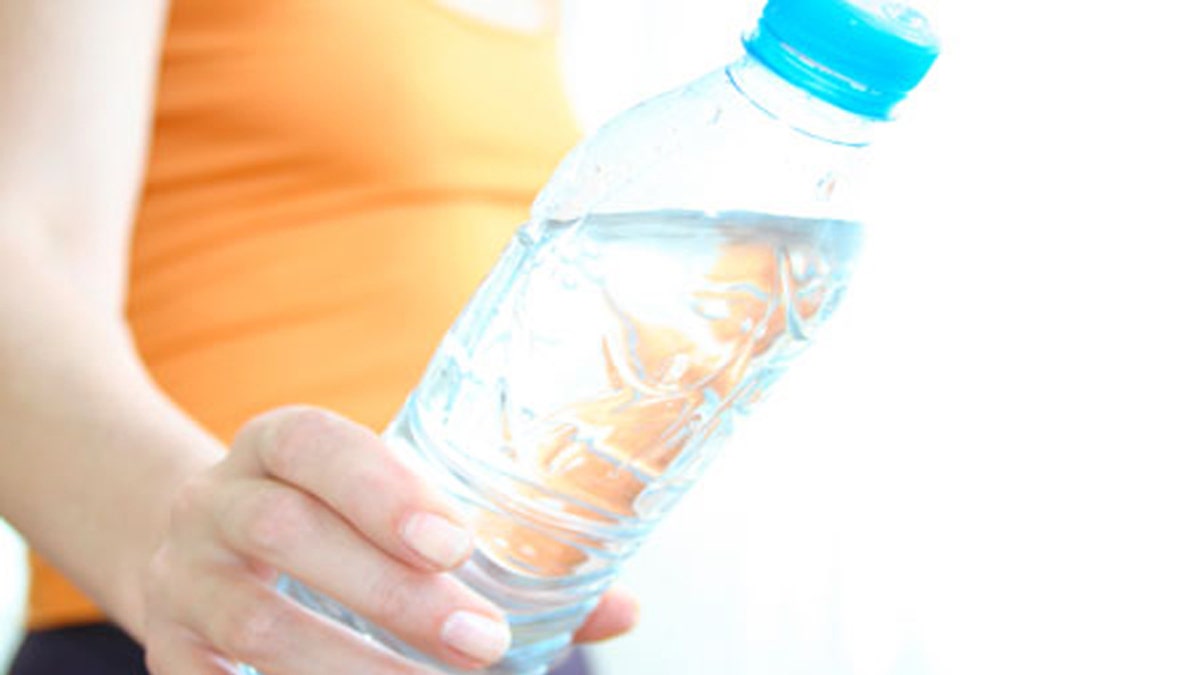
(iStock)
Every morning, Rob Rhinehart prepares a wholesome breakfast, lunch, and dinner—in about a minute. He mixes cold water (plus a splash of vanilla extract or a pinch of cinnamon) with 4.2 cups of a flavorless beige powder in a few 32-ounce bottles—and that's it. The 24-year-old Bay Area engineer subsists mostly by sipping on a cocktail of 31 nutrients until he hits 2,000 to 2,500 calories.
He believes the powder, which he playfully named Soylent after the food rations in the seventies sci-fi flick Soylent Green (his product is not made of people), could one day solve world hunger. And Rhinehart isn't the only one drinking the Soylent Kool-Aid: Earlier this year, during a crowdhoster.com campaign to make the product widely available, fans pledged $100,000 in three hours—and within three weeks, 4,000 backers had put up more than half a million dollars. A one-month supply of Soylent is available for $230 at campaign.soylent.me.
DETAILS: The Ultimate Weights-Free Workout
The idea came to Rhinehart last year while he was working on a tech start-up and had neither the time nor the money to get a decent meal. "I was existing on ramen," he says. "I felt unhealthy and wasn't energetic."
Although he had no expertise in chemistry or biology, he set out to create a viable alternative to comestibles. He spent 10 months reading textbooks, taking classes, and experimenting with ingredients before finalizing Soylent's formula—a mix of everything from carbs and proteins to chloride and phosphorous in chemical form, like a crushed multivitamin—which is precisely based on the Institute of Medicine's and the World Health Organization's recommended values. Rhinehart prefers to keep mostly to his liquid diet, but he does do a solid for his buddies sometimes, treating food the way social drinkers treat alcohol. "I eat the things I enjoy, like sushi or barbecue, on the weekends when I'm with friends," he says. He also allows himself decaf coffee (when he craves something warm) and the occasional libation.
DETAILS: 5 Reasons to Skip Breakfast
The longest Rhinehart has gone without a morsel of solid food? Thirty days—during early Soylent testing. "I got significantly healthier," he says. He adds that now, nine months later, he has more time on his hands, has lost more than 15 pounds, sleeps better, and has clearer skin and whiter teeth. He says his mind has become so sharp that he can read a book on number theory in one sitting. Before embarking on the Soylent diet, Rhinehart could barely run a mile—now he can cover more than seven.
But some experts find his claims a little hard to swallow. Joan Salge Blake, a spokesperson for the Academy of Nutrition and Dietetics, points out that there are no studies about the long-term ramifications of going without solid fare. "The foods in a well-balanced diet help prevent strokes and chronic diseases like diabetes and heart disease," she says. "Just because you're getting the required raw nutrients doesn't mean you're getting other things, like antioxidants."
DETAILS: 7 Trends You’ll Be Wearing This Fall
Susan Roberts, a professor of nutrition and psychiatry at Tufts University, shares Blake's skepticism and adds that most people would have trouble sustaining this ascetic regimen. "Reward centers in the brain are activated by food," she says. "Liquids don't have the same effect, so this diet would be like going without love, sex—all the things we are chemically remunerated for."
The potential for financial rewards aside, Rhinehart says Soylent is indeed satisfying: "It has everything I need and nothing I don't."
DETAILS: The Hottest Male Models of 2013 (so far)
The Diet Diary: A Week on the Program
Adam Dansky, 35, a New York City TV producer, lived solely on Soylent for seven days. Here's his report.
DAY 1: Tastes like cold, flavorless oatmeal. Dreading having nothing else. What the hell did I get myself into?
DAY 2: Watching other people eat—not fun. Added vanilla extract for flavor. Chewing gum sporadically satisfies some cravings.
DAY 3: Have lost five pounds, likely because I can't finish a day's worth of Soylent. Have the same energy as usual; slightly more focused at work.
DAY 4: I don't get enough fluids as is, so drinking instead of eating is hard. Down seven pounds. Energy levels are normal to above-normal.
DAY 5: Strangely, I am no hungrier than usual. Had been avoiding the presence of solid dishes, but I had a client dinner and consumed water while he tucked into a steak and called my diet interesting. That's one word for it.
DAY 6: The blandness is killing me—I need salt! I was able to stay up for a 24-hour shift at work without feeling the usual effects.
DAY 7: Bathroom trips have been surprisingly regular, though the quantities have dipped.
VERDICT: I'd consider Soylent as part of my diet, but that's it. Next up: pepperoni pizza.
